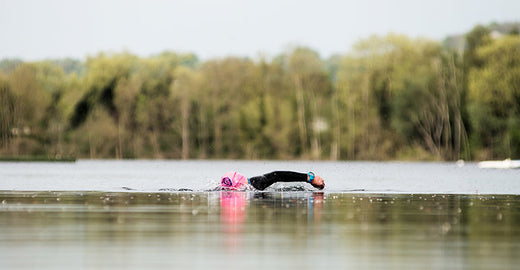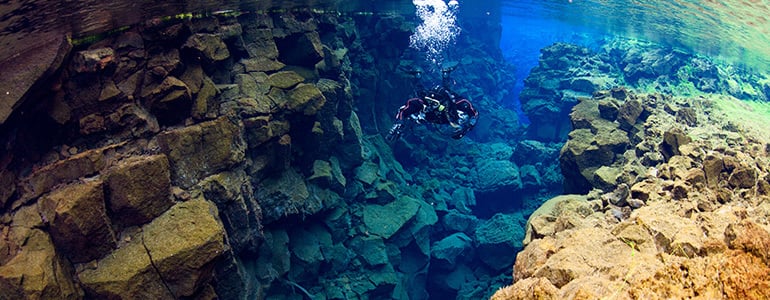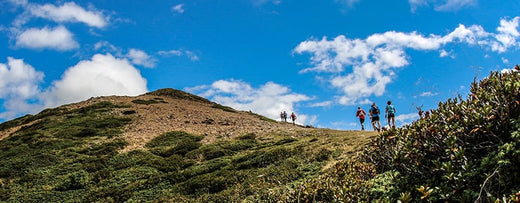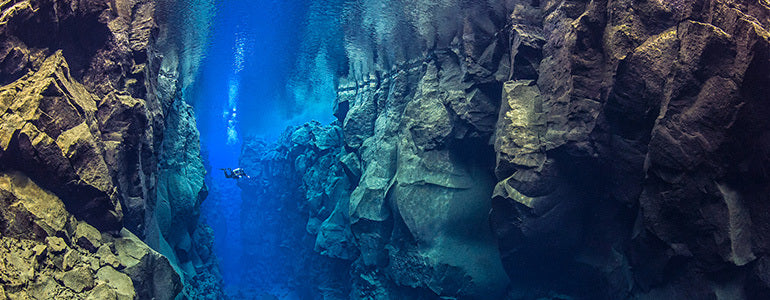

Suunto Blog

DEVELOPING A NEW ORIENTEERING COMPASS IS A TEAM EFFORT
Mårten, when did you start working on this project?
I have been involved in the development of Suunto's new orienteering compass line from the beginning of the year.
Product development is exciting as I have realized how much I as an elite orienteer can give insight to the product development team into how the product is actually used.
Mårten Boström worked closely with Suunto's compass business line manager Henrik Palin and designer Heikki Naulapää.
What did you want to change or improve?
As the compass is an orienteer's most precise aiding tool in navigating it's been an interesting task to refine the current compass to become an even better friend when out in the woods.
I wanted to redesign the needle in order to achieve a better contrast on to the map, make the needle much more stable while keeping it fast and take away some markings on the baseplate.
The graphics on the baseplate and the compass capsule were designed based on Mårten’s feedback.
Since the use of the compass needs to be swift I wanted to add color and symbol codes on the edge of the bezel so that there's no need to rotate the compass capsule. Using the colors and symbols one can simply memorize where the arrow is aiming and advance rapidly.
Our goal was to make the colors and symbols on the AIM distinguishable but easily memorable.
What are the key characteristics of a great compass?
A great compass should be easy to use and have a fast & stable needle.
How do you actually test a compass?
The compass is best tested in actual orienteering conditions out in the forest where temperatures vary from -10°C to +35°C and twigs hit your face while you are trying to navigate through unknown terrain over hills and through marshes!
Learn more about the new AIM-6 Thumb Compass
Learn more about the new AIM-30 Compass

Alex Mustard takes over @SuuntoDive Instagram
Marine biologist, author and pro photographer Alex Mustard is taking over @suuntodive for a week, beginning today. Make sure to catch his incredible images and the stories behind them! What’s your story, Alex? I’m an underwater photographer and marine biologist from the UK. I have been taking underwater photos since I was nine years old and diving since I was 13. I’ve recently distilled all I have learned into the new book Underwater Photography Masterclass. Where do you dive?
All over the world! In salt water or fresh water. In crystal clear blues of the Pacific Ocean to murky green-browns at home in England. What inspires you about the underwater world? The diversity. This can be the biodiversity of life – the ocean is home to such a variety of animals, that getting to know them, watching the different ways they live their lives, is certainly many lifetimes worth. But more than that it’s the diversity of diving experiences I love. One week I might be aiming my lens at a great white, and the next week I am just as excited to be framing up seaslugs back home. Then it is on to shooting in caverns, with cathedral like light beams spilling in through gaps in the ceiling. And next diving deep inside a wreck, searching for secrets that nobody has noticed before.
How would you describe your photography style? I would say diverse. The non-diving world sees me as a specialist underwater photographer, of course. But within underwater photography I challenge myself to be able to photograph everything well, from shipwrecks to seahorses. Is there a story you wish to tell with your images? Most of us who dive are very passionate about the underwater world. Yet we all see how humanity is hurting the oceans. Taking out too many large predators, damaging fragile environments with destructive fishing and polluting the seas. I think that all photographers hope that their images will inspire a change in attitude from the general public.
Follow @SuuntoDive to see Alex’s images or follow him on Instagram and Facebook. Check out his book Underwater Photography Masterclass.

The Old Bullet pushes beyond his comfort zone – and inspires others on the way
Suunto UK has partnered up with the Columbia Threadneedle World Triathlon Leeds in England. Amongst the 5,000 professionals and amateur triathletes competing, there is one that caught our eye – Jim McKellar – who just so happens to be the same age as us. Both Jim and Suunto turned 80 this year! We got in touch and found out a little more about what makes him tick.
As a veteran of 120 marathons and ultras alongside being a member of the Great Britain Age-Group Team at the ITU World Championships, Jim McKellar, or ‘Old Bullet’ as he is known by his running friends after his multiple exploits at the Comrades Marathon in South Africa, is no stranger to pushing the boundaries of our self-imposed limitations. But what makes his achievements particularly impressive is that he only took up running at 51 after being made redundant from his workplace of 25 years.
“I lost my pride and became a bit of a mess,” Jim tells us. “My doctor told me that if I carried on like I was, I’d be dead in five years. So I entered the London Marathon. That was back in 1992.” Twenty consecutive London marathons later, and it’s fair to say he'd got the bug.
You’re never too old to take up triathlon
But it wasn’t until the ripe old age of 74, shortly after completing his 120th marathon, which happened to be the 89 km long Comrades (for the third time), that he took up triathlon and in the following year entered the 2012 Windsor Triathlon, even though he didn’t know how to swim.
“Triathlon training is horrendous,” he laughs, “but I’m getting there”.
The following year, in 2013, he qualified for the ITU World Championship at Hyde Park and competed in the 75–79 age group, coming 3rd in the country and 10th in the world, one of his proudest achievements. He had hoped to return the following year, but it wasn’t meant to be.
Overcoming setbacks
Sadly, not long afterwards Jim suffered a major setback. Out cycling with his club, he was involved in a collision with a car, suffering injuries to his pelvis and a chipped bone in his right leg that required specialist treatment and skin grafts. For 18 months walking was hard enough, let alone running or cycling.
Now, most people under the circumstances might decide to call it quits, but not Jim. Indeed, if ever a man embodied the spirit of Suunto, a determination to win and to never give up, Jim is it.
“I need that challenge of getting up in the morning,” he continues. “My wife had myeloma cancer and for the past three years, I looked after her 24/7. We battled on. I’m battling on now – I will not give up.” Sadly, his wife passed away in March, making him even more resolved to compete in this year’s Columbia Threadneedle World Triathlon Leeds.
However, Leeds won’t be without its challenges if Jim is to achieve his goal of winning gold in his age group (M80-84) as a tribute to his late wife Lily – and in the process raise money for MacMillan. “My leg injuries have curtailed my training a little,” he says with a wry smile. “I’m not bothered about the swim or bike – I’m riding a hundred miles a week – and my swimming’s come on a treat, but I’ve had to adopt a let’s get round job in the run element.”
“Every morning I do exercises up lampposts to get rid of all the stiffness in my leg. But I’m up to six to eight miles of fast walking and jogging, which I’m pleased with considering three months ago I couldn’t go 100 yards.”
And so he should be pleased. Because as Jim points out, people don’t use their full potential and simply compete in their comfort zone. So perhaps we should follow his example, and learn to push ourselves beyond the norm. We never know, we might just surprise ourselves.
Images by James Carnegie
Read more triathlon stories:
10 Ambit3 hacks for triathletes
How to use the power of commitment
7 spring training camp tips for triathletes

7 tips to help you make amazing diving videos
Jill exploring the Bell Island mine. © Cas Dobbin 2016
Today there are no barriers to entry for shooting underwater video. GoPro cameras have put awesome potential within easy reach both physically and financially. Even with this compact camera, 4K video can be shot, edited and uploaded to social media sites. However, with video capability in everyone’s hands, there are some key things you need to do to separate yourself from the pack.
First things first
General diving skills are critical with good buoyancy control being at the top of the list. Master this first!
Watch Jill's video of devil rays off the coast of Azores Islands.
The gear
Shooting underwater means you are filming through a filter. Colour and light are gradually absorbed the deeper you go. In many cases, visibility can be minimal. You need good quality, wide-angle video lights to help illuminate the scene and increase colour saturation. The closer you can get to your subject, the less filtering water between you and a great shot. Use a wide-angle lens for shooting or try macro work with a tripod – only if you can avoid damaging the environment.Watch Jill exploring Devil's Ear cave system, Ginnie Springs.
Shoot for easy editing
Don’t try to edit in the camera. That means you should shoot long sequences with a long “tail” after the action has passed. This gives you room to edit and use transitions.
Slowly, slowly!
Move very slowly and deliberately and consider holding long stationary shots to let the environment and marine life flow around you. Most beginners get overly enthusiastic and move the camera around too much. They are eager to film the next shot rather than patiently working on the current encounter. That type of footage is not just tough to edit but can give your viewers seasickness!Press play to see the shipwrecks of Bell Island.
Capture variety
When you shoot, try to capture a wide range of shot types. You need wide establishing shots that show context. You will want to capture things like jumping off the boat or preparing gear. You'll also need an endless supply of shots called cutaways. These short clips of a few seconds in length are the glue that holds longer shots together. When a diver is prepping gear we might see a cutaway of the pressure gauge needle popping up as the tank is turned on. We might see a quick okay signal close up on a hand. You can never have enough cutaway shots in the edit. You will use every single one you shoot.
Press play to watch Jill talk about her diving career.
Show the tranquillity
Remember, the beauty of the underwater world is best enjoyed drifting along rather than frenetically bouncing around from view to view. Let your shots breathe and allow your viewers to enjoy the same peace and tranquillity that you do on a swim along a perfect reef. The marine life will be more likely to cooperate and gracefully participate in your sequence too.
Keep it short
And finally, when you get into the postproduction phase, keep your edit short. Try to tell a story in less than three minutes. That is about the attention span of most viewers. Nobody wants to see the entire dive and the things you missed. If you only have 90 seconds of great footage, then keep your edit even tighter. You’ll get more hits and shares and enjoy watching your own masterpiece again and again.

Four myths about ultra running that you need to know
Director of coaching at trainright.com, Jason Koop has been guiding elite athletes for decades. His book Training Essentials for Ultrarunning is a veritable goldmine of training knowledge. We caught up with coach Koop to talk about the book, which he says disproves widely held beliefs about ultrarunning.
Training for an ultramarathon demands high volume and time
The first myth, says Koop, is really bad for the sport of ultrarunning; the widespread, and discouraging, belief that to run one you need to clock in a seemingly insurmountable number of kilometers or miles and hours each week.
“It creates a barrier to entry for a lot of people because they think they have to train 18 or 24 hours a week,” Koop says. “The fact of the matter is you don’t need that much time and that much volume. While more is better, there’s a point of diminishing returns. After about nine hours per week, every additional 10% of volume doesn't correlate to a 10% improvement in performance or capability. It might only be 5 or 1% you get back.
For a 100 mile race, Koop says doing 10 to 12 hour training weeks for eight to 10 weeks is enough. For the 50 km or 50-mile distance, it’s about nine hours for about six to eight weeks.© Philipp Reiter
You need mountains to properly train for an ultramarathon
While living and training in the mountains is helpful, it’s not essential. “Consider Kaci Lickteig,” Koop says. “She was second at the Western States 100 in 2015, yet she lives in Omaha, Nebraska and only does about 305 m of vertical a week. It takes her 20 weeks to accumulate the amount of vertical that’s in the Western States 100. But yet she has been really successful. It’s nice to train in the mountains if you can, but most normal people can be successful without them. The more important priority is improving your cardiovascular engine.”© Philipp Reiter
You have to be freakishly talented to run an ultramarathon
Koop says a lot of people believe you need to be genetically endowed with a sky-high vo2 max to be a good ultra runner. “I really haven’t found that to be the case,” he says. “Most of the guys and the girls we test, they’re not even close to an Olympic caliber marathon runner or even to a national caliber marathon runner. An ultra runner’s aerobic engine isn’t the sole determinant of performance in the way as it is for a marathoner. There is a lot of other factors that play more of a role in an ultramarathon – strategy, mental toughness and nutrition, for example. You have to be able to do a big mix of things and don’t have to be the biggest aerobic powerhouse on the planet.”© Philipp Reiter
I would never be able to finish in time
“Most ultra marathon cut off times are really generous,” Koop says. “The physiological talent or aerobic power that it takes to run at the pace to make cut off is actually within reach of most people. A typical cut off time for a 100 miler, for example, is 30 hours – that’s 18 minutes a mile. Just about everybody walks one mile in 18 minutes and 30 seconds. What that indicates is the fitness required to complete the task isn’t very high. So it’s an accessible sport from this standpoint.”
Lead image: © Philipp Reiter

10 tips to take amazing underwater photos
Basking Shark, UK. © Alex Mustard
Alex Mustard has been taking underwater photos since he was nine years old and began diving when he was 13. He’s the author of Underwater Photography Masterclass, which distils his know-how on this challenging form of photography.
“It’s the diversity of diving I love,” Alex says. “One week I might be aiming my lens at a great white, and the following week I am just as excited to be framing up sea slugs back home. Then it’s on to shooting in caverns, with cathedral-like light beams spilling in through gaps in the ceiling. And next, diving deep inside a wreck, searching for secrets nobody has noticed before. It’s all those things that I love.”Kittiwake Shipwreck, Cayman Islands. © Alex Mustard
First things first
The most important first step is to make sure you are as comfortable and as competent in the water as possible before you take a camera diving. Cameras take a lot of your attention underwater and you may not pay enough attention to your buddy, to your dive computer and remaining air pressure. If you're an experienced diver you will be used to paying attention to all those things. By being a better diver you get better pictures.
Get a feeling for it
Buoyancy and manoeuvrability are two of the biggest challenges to diving. Taking a camera down totally changes these two things. It’s good to know beforehand how this is going to feel. I always suggest people take an empty camera housing down as a good way to get used to it. Wrap a diving weight in bubble wrap or in a cloth and stuff it inside the underwater housing so it sinks. Then experiment with it in the shallows or in a pool.Kelp Forest, USA. © Alex Mustard
The camera isn’t so important
The camera is one of the least important parts of an underwater photography set up. It’s actually the lenses and the underwater flashguns that make far more of a difference to your photos than the camera. An expensive camera that’s not being adapted properly to underwater photography will always take poorer pictures than a very simple camera that has the right accessories. Invest in the accessories rather than the camera.
The lenses that counts
We use two types of lenses almost all the time. One is a close focusing macro lens for taking close ups from within touching distance and the other is an ultra wide-angle lens that focuses very close. Typically we use fish eye lenses a lot because they give us the widest possible view from as close as possible.Jellyfish Lake, Palau. © Alex Mustard
Lights, camera …
Almost every underwater photo is taken with a flash. We use flashguns on short, adjustable arms on either side of the camera to light up a subject. Water as you go deeper absorbs all the colour so if you don’t use a flash you’ll end up with blue or green pictures. Flashguns take time and skill to get used to. That’s really where the art of underwater photography lies.
Up close and personal
Almost every underwater photo is taken from within touching distance of the subject. This means you need to be able to maneuverer around a subject and in a way that doesn’t scare it away. If you’re thrashing about or racing around, you’re only ever going to see the tails of marine life. If you’re calm and at one with the environment you will get all the great encounters and that’s what gives you the good pictures.World War II Motorbike On Wreck, Egypt. © Alex Mustard
Plan ahead of the dive
If you go and speak to whomever is organising a dive ahead of time, they will tell you what you’ll see and where. There’s a huge amount of local knowledge you can benefit from just by asking people a few questions. Sometimes an advertisement will say it’s a great shark dive, but in reality they don’t come within five meters. But the coral scenery might be nice so you set up for that.
One dive, one lens
The only way to change your camera lens is to come up to the surface, change it and then go back down and that’s not very convenient. Usually it’s one lens for one dive. One of the big steps you make as an underwater photographer is when you realise the best photos come by realising the strengths and weaknesses of the particular lens your diving with and focusing your attention on the subjects that suit it.Diving Between The Continents, Iceland. © Alex Mustard
Don’t be rude
Underwater most marine life doesn't fear man. However you need to get within touching distance of it. Most wildlife doesn’t like heavy eye contact so try not to stare. Most wildlife doesn’t like you approaching fast so take your time to approach a subject. Don’t just race in as fast as you can because that’s bound to scare things away. If you see a subject slowly swimming along, swim parallel to it, and slowly close the gap.
Dive with a photographer
Diving with another photographer is a really good way to dive. You’ve got twice as many eyes. If you’re shooting scenery you can pose for each other. After the dive you have a friend who will be interested to see your pictures and talk about photography.
For more incredible images by Alex Mustard, like his Facebook page.
Lead image: © Alex Mustard










































































